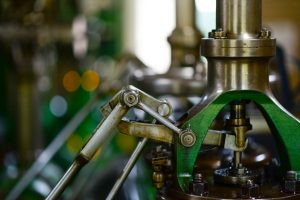
15 Jan CNC Machining Overview
The process of computer numerical control (CNC) machining combines heavy machinery and complex computer software to control the movements of factory tools and machinery to produce specific components. This manufacturing process allows automated control of various machining tools (lathes, drills, etc.) through the use of a computer to provide a precise machining solution that is vastly superior to manual control in terms of lucidity and productivity.
Generally, CNC machines employ a motorized maneuverable tool and a motorized platform to produce many different types of material. This can range from computer parts and aircraft components to wire-bending and wood-cutting machines. The application of this technology is far-reaching and the use of these types of systems has been steadily increasing in America’s manufacturing sector in the past two decades.
The Usefulness of CNC systems
CNC systems offer large computational potential and are controlled by a programming language known as G-Code. This language dictates the movement of the machinery and factory tools involved. A few of these elements include feed rate, coordination, drilling functions and speed of the machinery.
These instructions can be seen in the form of CAD (computer-aided design) files, which can be transmuted into a sequential program of machine control instructions. After the code is written, a machine can perform an automated task without a manual operator. By automating machine processes, CNC machining increases the speed of production, reduces labor costs, and cuts down on human error.
After the G-code is inputted, the computer can control the exact velocity and positioning of the tool it is equipped with; because of this, it is possible to produce complex three-dimensional shapes and products that would be incredibly difficult to fashion with manual machining or labor. Due to this precision, CNC machining is primarily used for materials that require a high level of precision in a repetitive fashion (think mass-produced furniture and computer components).

Common CNC Applications
There are a host of materials and applications that can be produced through the process of CNC machining. For example, water jet cutters can be completely automated to cut through very hard materials, such as metal and stone. High-pressure water, sometimes mixed with another agent, can cut through just about anything you can imagine. These machines are often used to cut materials that cannot handle the temperature of heat-intensive processes used by other CNC machines (such as plasma cutters and electric discharge machines). Many factory machine parts, aerospace materials, and industrial mining equipment are fashioned through the use of water jet cutters. CNC systems and machines are wide-ranging and can include:
- Laser Cutters
- Glass cutters
- 3D printers
- Lathe machines
- CNC mills
- Wire-bending machines
- Foam cutters
- Wood routers
These machines are capable of complicated cuts and drilling that can be made at various angles and levels on a work medium. As long as the machine is coded properly and safely, complex designs can be repeated over and over again.
Automation Tech Support Services
At Automation Tech Support, we provide full-service tool engineering that can completely design and build any type of assembly or production equipment for manufacturing purposes. All custom made components for the machines we build are manufactured at our facility. We can manufacture custom parts from your CAD files or we can design the parts based on the application you require. Whatever your tool engineering needs are, we can help.


YourFriendPablo
Posted at 19:16h, 20 FebruaryGreat, I really like it! Youre awesome